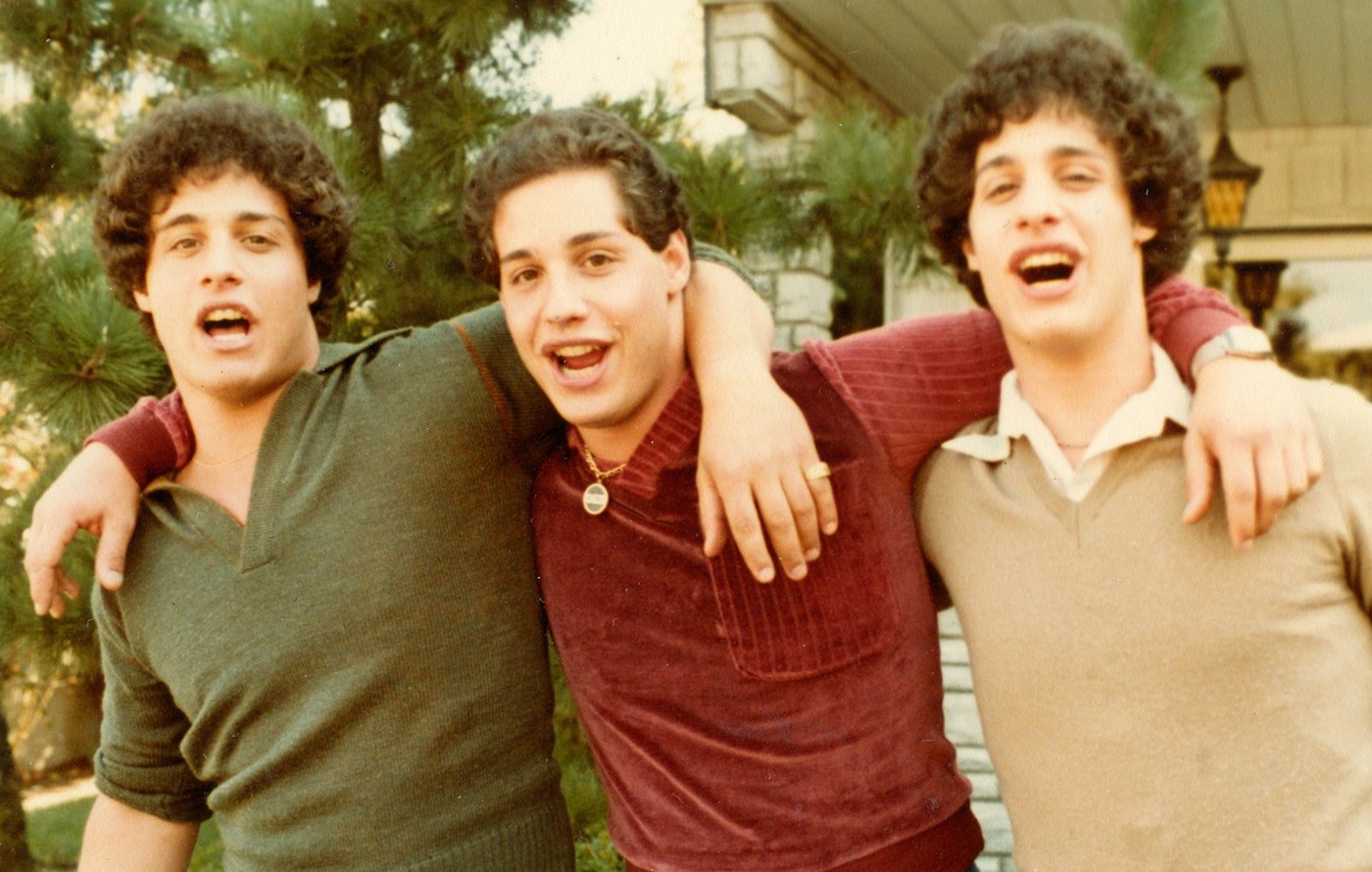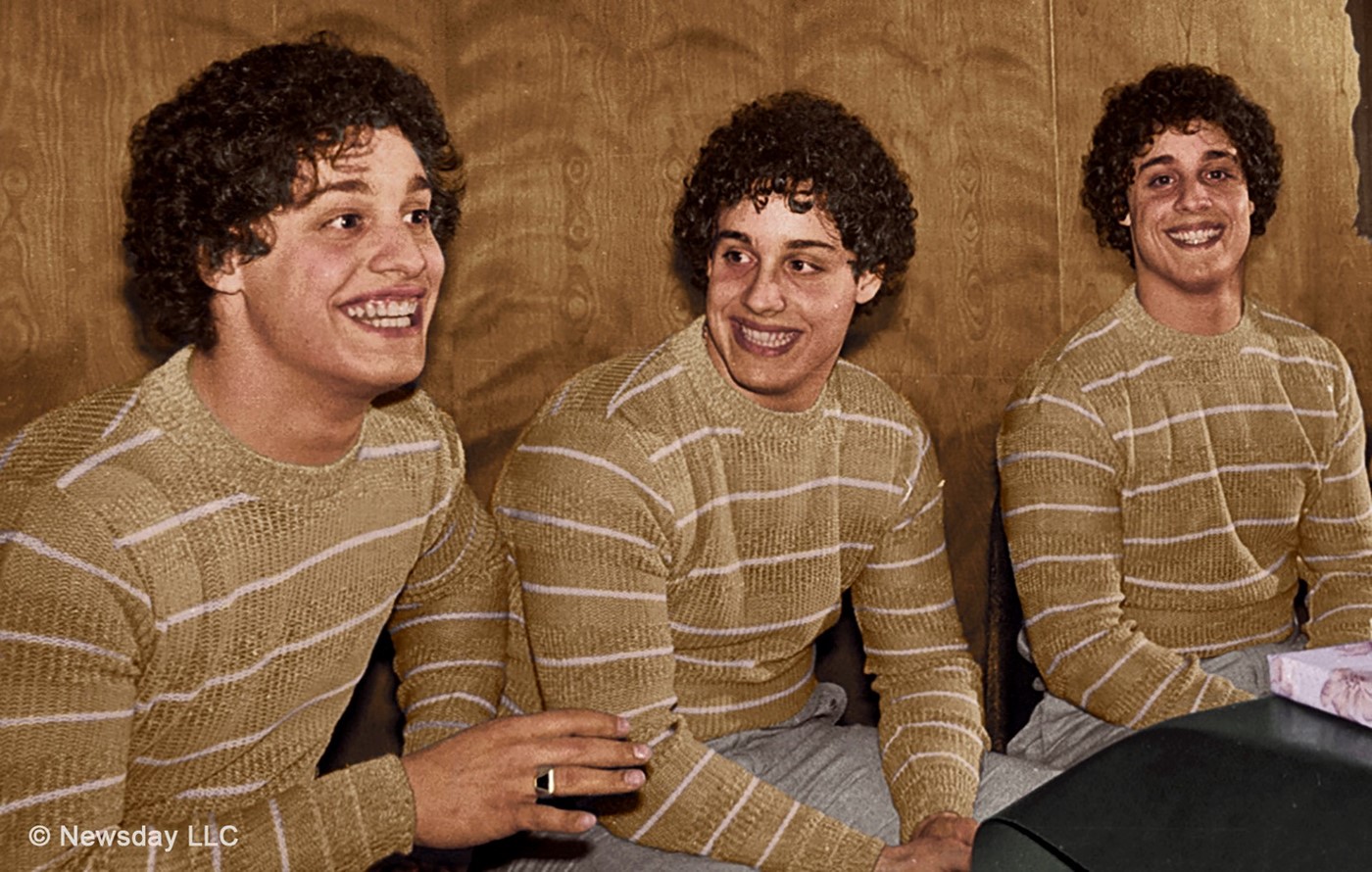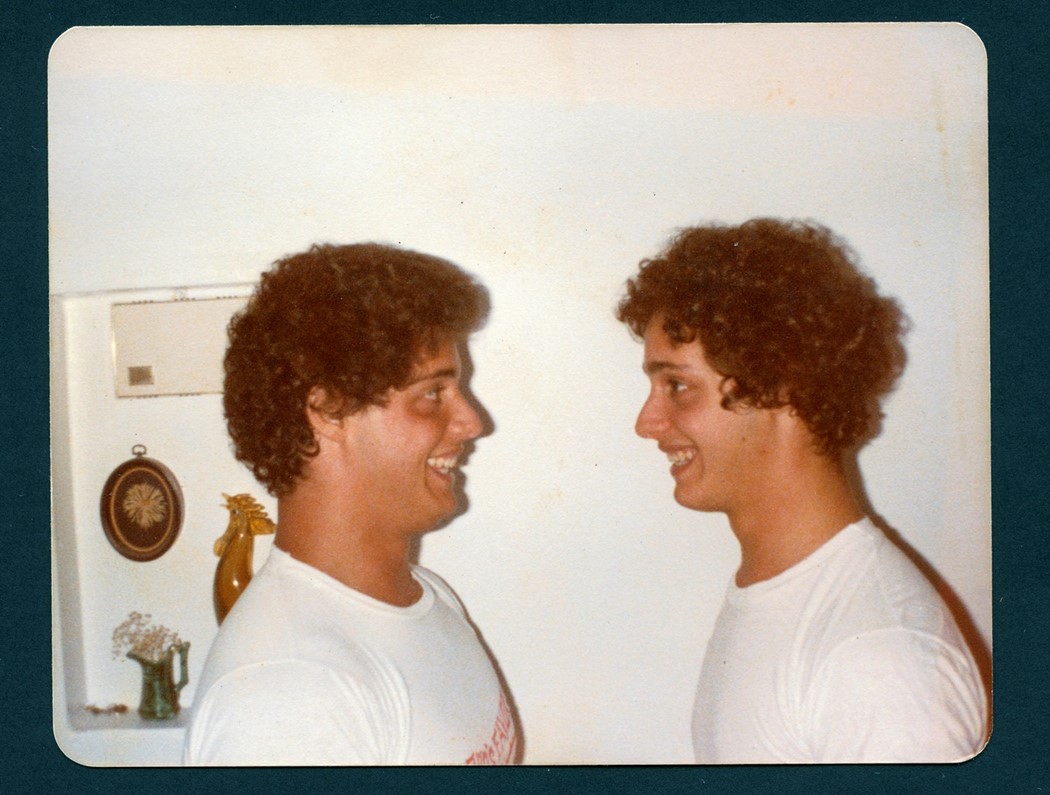The Stranger-than-Fiction Tale of Triplets Separated at Birth
A new documentary, Three Identical Strangers, examines a famous and long-forgotten adoption story that remains shrouded in mystery
Warning: While spoilers about the events that unfold in Three Identical Strangers are kept to a strict minimum, partial clues are woven into the following text.
If your star sign happens to be the oft-maligned Gemini, you’ll be well aware of the many misinterpretations that come with twins ruling the zodiac for roughly 30 days every calendar year: we’re supposedly two-faced, wishy-washy and mercurial. I’d argue the common misunderstandings around Gemini’s prime duality symbol are commensurate with pop culture’s longstanding fascination (or is it fetishisation?) for twins.
Some of you might have grown up watching the Olsen twins come of age on a wholesome family sitcom or via their kid detective franchise. Others might have preferred Patty and Selma, the chain-smoking and all-around miserable older sisters to Marge Simpson. But whether it’s live action or animated, in ancient mythology or contemporary ad campaigns, womb-mates have been used and abused by storytellers to extract every gimmicky morsel out of the evocation of duality they immediately convey. [Insert tired “Double the trouble” type tropes here.] That’s something that was top of mind for British filmmaker Tim Wardle when he set out to revisit the astonishing true story of Jewish-American identical triplets David Kellman, Eddy Galland and Bobby Shafran, who were separated by science when they were adopted by three different families at six months old before accidentally finding each other (to much elation and widespread media fanfare) as young adults in 1980.
“Speaking with various people in the film highlighted this human fascination for twins, which stretches all the way back to [the Roman myth of] Romulus and Remus,” Wardle told Another Man on the eve of Three Identical Strangers’ UK release. I think there’s something unconscious in us where we all wonder what our lives would be like if we hadn’t made certain decisions, had been born in a different place, married someone different or done a different job. The idea of twins enables us to play that out, particularly the idea of separated twins.”

All sugar, sidestepping the sinister
As the documentary’s archival footage makes clear, when David, Eddy and Bobby coincidentally and very ecstatically found each other as 19-year-olds, their separated-at-birth adoption tale made them into immediate media sensations: cue the TV interviews with Phil Donahue and Tom Brokaw, the cameo in Madonna’s feature Desperately Seeking Susan, the regular sightings at Studio 54 and the launch of their own SoHo steakhouse called Triplets. Yet all this rabid media attention never really scratched beneath the surface to uncover the more sinister forces that would have played a part in splitting up the triplets.
“When you get a story like this, the first thing you think is, ‘this is incredible’,” explains Wardle. “The second thing you ask yourself is: why has no one tried to tell this story before?” As he set out on what would become a four-year journey to get the film made, the BAFTA-nominated director quickly discovered that multiple film crews had attempted to pull this off, before being shut down by various organisations and institutions. “We learned of three attempts – two in the 1980s, one in the 1990s, by major US networks – to tell this story, and in every case, the filmmakers had gotten to a certain point before the films were pulled by people within the networks, higher up the ladder, without any explanation. So we were quite paranoid when making it. People who’d tell us, ‘you’ll never finish this’, ‘you just won’t be allowed to’, ‘the people involved in this story are so powerful’.”
Without giving too much away about the disturbing scientific revelations viewers can expect, Wardle reminds us that it’s worth revisiting the broader historical context around the time of this case. As a former psychology student himself, he describes the 1950s and 1960s as a time when psychology was “the hot new thing” that pushed (and sometimes overstepped) the boundaries of what was ethically acceptable. “There were loads of psychology experiments coming out at the time such as Stanley Milgram’s obedience experiment and the Stanford Prison Experiment. Lawrence Wright, the investigative journalist we feature in the film, describes the era as ‘the Wild Wild West of psychology’.”

Ethics and emotional truths
Working on such a complex, unresolved story with tragic consequences for all those involved, Wardle knew he was working with a highly unusual narrative, but that his ethical responsibility to the brothers was paramount. “I started becoming aware of the weird parallels between the power that a scientific researcher has over his subjects and that of a documentary maker over his subjects, as they call them in America. Because you turn a camera on and most people will tell you pretty much anything. There’s a huge responsibility to use that material in an ethical way. I was nervous because, while I thought their story was extraordinary, I didn’t want to exploit it.”
But the brothers knew their story was extraordinary, and wanted someone to recount it both entertainingly and intelligently, according to Wardle. The resulting documentary goes beyond a clinical dissection of their story to tap into the emotional truths underpinning it all. “The film is very much structured around their perspective. We are on the journey with the brothers and information is revealed to us as it was revealed to them at the time. It gets the audience on board with their story, so when darker things happen later in the film, you really feel for them because it’s happening to you too.”
Given how powerful, murky forces seemed to have long fought against this story ever seeing the light of day – Pulitzer-winning journalist Lawrence Wright refers to the unresolved mystery around the triplets as “the story that always got away from me” – the outcome of having it premiere at Sundance at the top of the year, only to then become a runaway box-office smash (with $12 million in US ticket sales alone) cannot be overstated. Wardle believes that time elapsing helped his team tremendously, as “a number of the key people who’d been suppressing the story had passed away,” and the increased fragmentation of the US media landscape made it more difficult for individuals to “just shut things down, as was the case in the 1980s, when media was more centralised.”
A powerful cinematic legacy
On the happy-end front, The Atlantic recently documented a heart-swelling reunion made possible thanks to the film. A pair of 54-year-old identical twins living in New Jersey and California, who had been adopted from the same agency as the brothers, took DNA tests before meeting up for the first time. “It’s amazing to me that the film continues to have a legacy after its release in the US. I think that will continue for years to come, as there may still be loads of others out there we don’t know about.”
Having deftly worked around numerous pitfalls such as witnesses scared into silence, redacted documents and crisis management PR plays to get this story out, Wardle and his team will be the first to acknowledge that many questions remain. But the filmmaker was ready for the triplets’ story to be disseminated far and wide, namely to encourage others to come forward with first-hand accounts, apologies and insights.
“Ultimately, I think there’s an irony in the fact that we might have a twin out there,” ponders Wardle when asked about the broader questions people involved in this experiment might have tried to answer. “We all like to think that we’re in control of our own destiny, that we have agency over our lives. What twins do, particularly identical twins, is to show us how powerful genetics are and how little control we may have over our own lives. It’s certainly something that’s unresolved in my head.”
Three Identical Strangers will be released theatrically 30 November in the UK.












